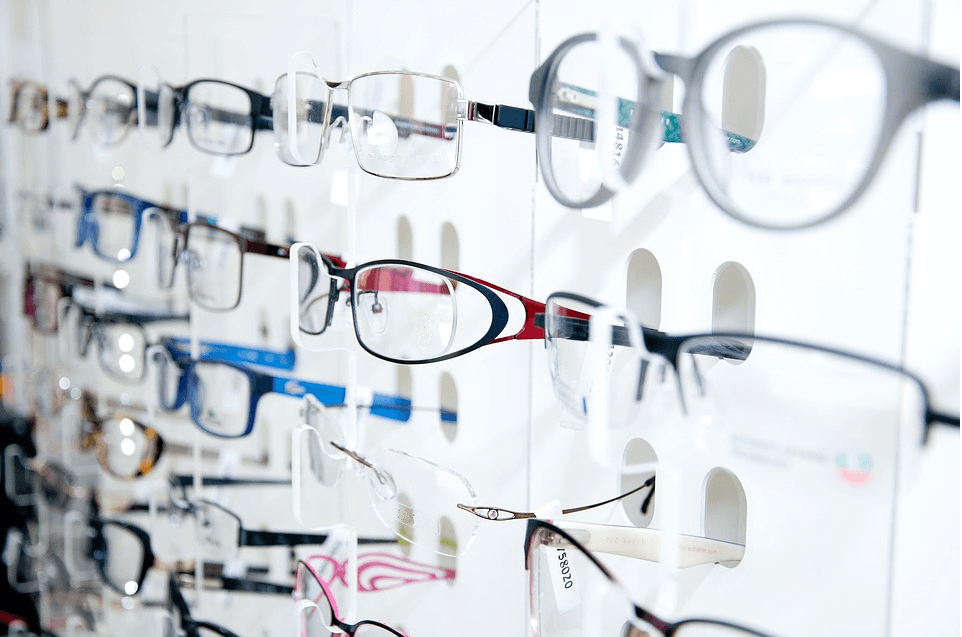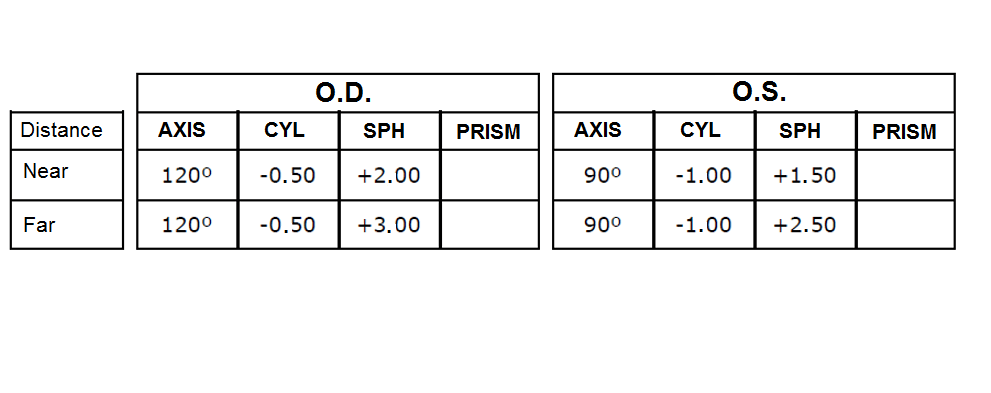
When having our vision examined by an optometrist, we leave the consultation with a prescription known as vision correction or eyeglass prescription, in which we see several data and abbreviations indicating, among other things, our refractive state. However, for most eyeglasses wearers, this kind of prescription may be unintelligible, whether for its terminology or for the long list of abbreviations it includes.
With the aim of making it easier to understand this kind of prescription, we include hereinafter a prescription sample with a description of the most frequent concepts and abbreviations that may prove useful to everybody in order to understand eyeglass prescriptions.
An eyeglass prescription is intended to define the perfect visual correction needed to enjoy the best visual acuity both in distance vision and near vision. This data will be enough in the optician’s shop to have your glasses or contact lenses made, although in the second case some values will have to be adjusted. The aim of optical correction is to improve quality of vision and therefore, quality of life.
We include below an eyeglass prescription sample from Institut Català de Retina:

The prescription format can substantially vary, but terms and abbreviations will be in almost all cases the same. Let’s see them.
SPHERE
Abbreviations and designations: Esf, Sph, Sphere
The sphere is what is known as diopters and it defines the power of the lens needed to correct visual errors that we have, such as myopia (in which the sign before the number will be negative [-2.5]) or hyperopia, (always with a positive sign before the number [+2.75]), always using multiples of 0.25 diopters (+0.25, -3.75…).
CYLINDER AND AXIS
Abbreviations and designations:
Cylinder: CYL, Cylinder. This element may appear right after the spheric value.
Axis: Axis
These are the values for astigmatism. They indicate the power and positioning direction of toric lens, which corrects this type of refractive error. Values are also expressed in diopters and may have a positive or negative sign before the number.
If no value appears, this box is left empty or filled with a zero, which means there is no astigmatism. In case we only suffer from astigmatism, the sphere box would be the one left empty or with a 0 value. Astigmatism, just like myopia and hyperopia, is expressed using multiples of 0.25 diopters.
Addition
Abbreviations and designations: ADD or Addition
It is the necessary information in case a near vision correction is needed. With this data, the optician’s shop will be able to provide several solutions: progressive, bifocal, or near monofocal glasses. Addition defines the spheric power that will correct presbyopia.
The value represents the refractive power to be added to far vision correction, with the aim of providing a clear near vision as well. It usually goes from +0.50 diopters to +3.50 diopters, being always a positive value. However, in some prescriptions, near vision correction (the sum of far vision correction and addition) may be directly stated, reason why this value could appear with a positive or negative sign before the number.
PRISM AND BASE
Abbreviations and designations:
Prism: prism
Base: BU (base up), BD (base down), BI (base in, toward the wearer’s nose) or BO (base out)
Prism is complementary to the spheric or cylindric correction and it is expressed in prism diopters (p.d.). The specialist can use this data in case there is a muscular imbalance between both eyes to optically compensate binocular imbalances.
Base indicates the direction of the prism when mounted on glasses (up, down, in or out). It is possible to see this value expressed in degrees.
PUPILAR DISTANCE AND HEIGHT
Abbreviations and designations:
PD or IPD: Pupillary or interpupillary distance
NPD: Nasopupillary distance
Distance between centers
Pupillary or interpupillary distance is the existing distance between the center of both pupils (between left and right eye). It is expressed in millimeters. Nasopupillary distance is the distance between the center of the nose and the pupil center, reason why two nasopupillary distances equal one pupillary distance. The pupillary height is the existing distance between the pupil and the inferior part of the chosen frame that will hold the lens. All this values are measured in mm.
In order to assemble your glasses and align them, in the optician’s shop these two essential values will be required, but they are usually not stated in the prescription, as they are not useful for the wearer and they cannot be measured before the wearer has chosen the frame he/she wants.
In eyeglasses prescriptions, we can also find other general abbreviations:
PD: It can refer to pupillary distance or to prism diopters, depending on each prescription.
DV: distance vision (>3 meters)
NV: near vision (30 – 40 cm)
IV: intermediate vision (40 cm – 3 m)
OD/RE: right eye
OS/LE: left eye
OU: both eyes

Contact us or request an appointment with our medical team.